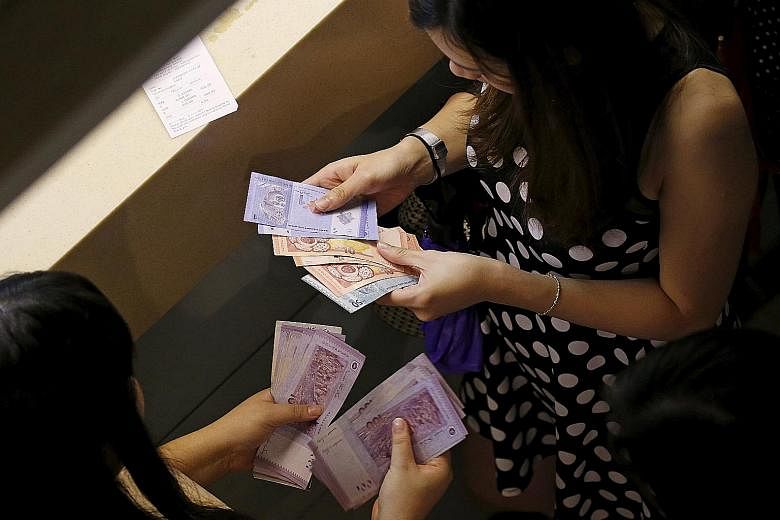China's slowdown, the commodities slump and the crashing Glencore share price proved a toxic brew for regional currencies yesterday.
The Malaysian ringgit and Indonesian rupiah were the big losers, touching their lowest levels against the United States dollar since 1998.
The ringgit fell for a sixth day and lost around 0.71 per cent from Monday to 4.4590 to the greenback, a slight recovery from earlier in the day.
It was a similar story for the rupiah, which dropped to 14,730 to the dollar at one point before closing 0.21 per cent up from Monday at 14,669 to the dollar.
The ringgit also lost ground to the Singdollar yesterday, falling 0.73 per cent to 3.1213 against Singapore's currency, a new low since at least 1981.
The Singdollar was not immune, plunging to a six-year low in the morning before it found its footing and closed the day up 0.014 per cent at 1.4277 against the US dollar.
Currencies went south yesterday after investors panicked and bailed out of commodity stocks such as Glencore on news that profits of industrial companies in China fell 8.8 per cent last month.
With China's economy and demand for resources showing further signs of weakness, currencies of commodity-focused economies in Asia will remain under pressure, said DBS senior currency economist Philip Wee.
He told The Straits Times: "We still have disappointing growth and exports in the region, while equity markets are in bad shape. Asian currencies are very sensitive to sentiments over outlook, and the sentiments are certainly weak now.
"Until investors can see economic data improve, until they see growth prospects returning, regional currencies will likely stay on the defensive."
These include the Australian dollar, which dropped below parity to the Singdollar again yesterday.
The Singdollar rose 0.33 per cent to 1.0031 to the Australian dollar.
Around 70 per cent of Australia's exports came to Asia last year, Mr Wee noted, and its currency will not be spared from regional commodity and economic woes.
More uncertainty may emerge in the days ahead with investors waiting for more data to diagnose the state of the global economy.
The Bank of Japan will release its quarterly corporate sentiment survey tomorrow, and the US non-farm payroll data will be out on Friday.
The US jobs data will be a key reference point for the timing of the Federal Reserve rate hike. It is a dilemma for investors: A rate hike will signify firmer US recovery but it will also disrupt Asia's already choppy money markets.
Last Friday, after Fed chair Janet Yellen stated that a hike is still likely by the end of this year, the US dollar index, which tracks the currency against six major counterparts, immediately went up 0.4 per cent.
With the same event unfolding again, the US dollar may maintain its lid on regional currencies, OCBC currency analyst Emmanuel Ng said in a note yesterday.
"We continue to note concentration risks in emerging markets and Asia in terms of further flashpoints for risk aversion," he said.
"In the near term, investors seem to have lightened up on risk positions even before the deluge of headlines expected in the latter part of the week, and seem to expect the (US) dollar to retain the upper hand at this juncture."


